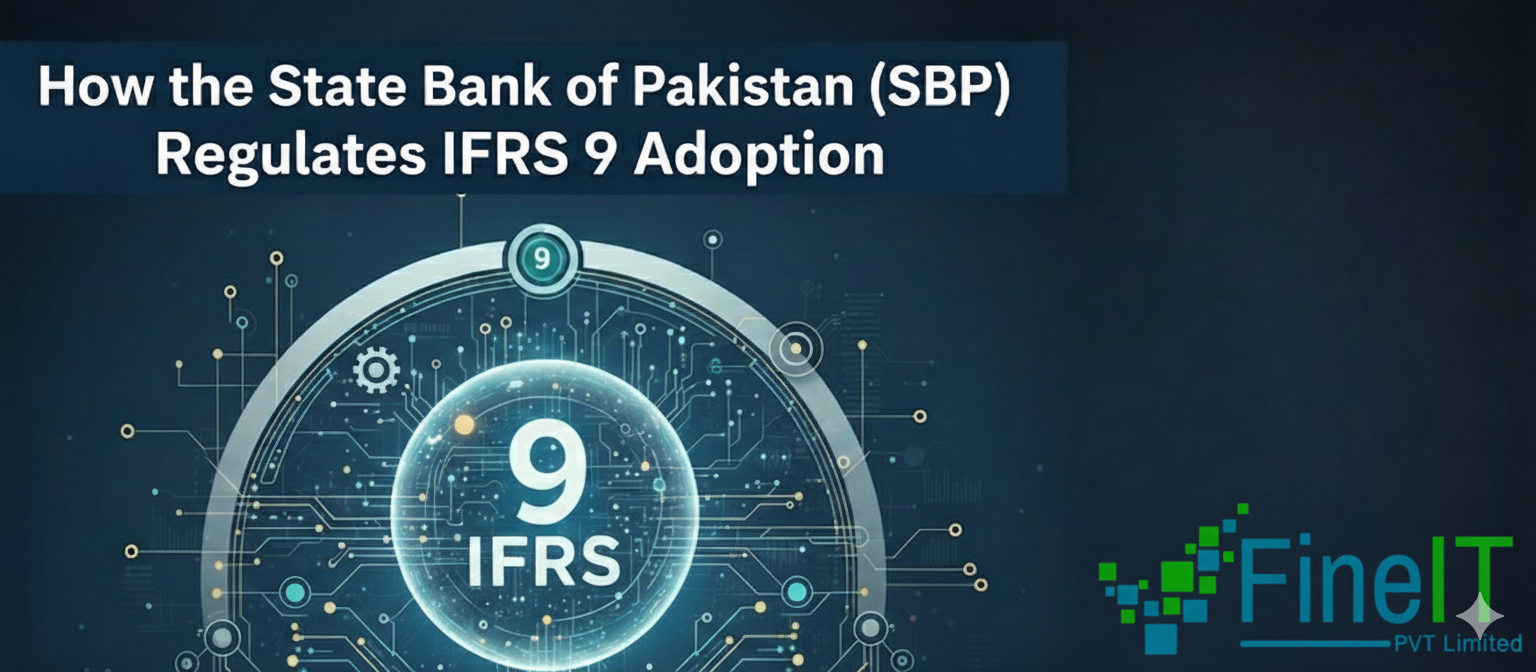The International Financial Reporting Standard 9 (IFRS 9), titled Financial Instruments, represents a significant global shift in accounting for financial assets. In Pakistan, the State Bank of Pakistan (SBP), as the primary regulator, plays a pivotal role in ensuring the smooth, consistent, and robust implementation of this complex standard across the banking sector, including Banks, Development Finance Institutions (DFIs), and Microfinance Banks (MFBs).
Why IFRS 9 is a Major Change
IFRS 9 primarily changes the way financial institutions account for:
- Classification and Measurement: It introduces a principles-based approach for classifying financial assets based on the entity’s business model and the contractual cash flow characteristics of the asset (the ‘Solely Payments of Principal and Interest’ or SPPI test).
- Impairment (Expected Credit Loss – ECL): This is the most significant change. It replaces the old ‘Incurred Loss’ model with a forward-looking ‘Expected Credit Loss’ (ECL) model. Under ECL, banks must provision for expected losses on a performing portfolio as well as non-performing assets, making the provisioning process more conservative and timely.
- Hedge Accounting: It aligns hedge accounting more closely with risk management activities.
SBP’s Regulatory Framework and Timelines
The SBP has been actively engaging with the industry since 2018 to ensure preparedness for IFRS 9. Its regulation is primarily driven through the issuance of BPRD Circulars and IFRS 9 Application Instructions.
- Implementation Deadline: The SBP initially set a deadline of January 1, 2021, but considering the complexity and the challenges faced by the industry, it has provided extensions. The implementation dates were phased:
- January 1, 2023 (Revised): For large banks (asset size $\text{PKR } 500$ billion or above) and all DFIs.
- January 1, 2024 (Revised): For all other banks and Microfinance Banks (MFBs).
- The SBP continues to issue clarifications and transitional reliefs, modifying certain application timelines for specific aspects like Exposure at Default (EAD) models and the Effective Interest Rate (EIR) method.
- Parallel Run Requirement: The SBP mandated a parallel run of IFRS 9 from as early as January 1, 2020. This required financial institutions (FIs) to prepare a separate pro forma set of financial statements based on IFRS 9 requirements alongside their statutory statements, allowing them to assess the quantitative impact and readiness before the effective date.
Key Regulatory Directives by SBP
The SBP’s instructions are focused on ensuring standardized practices and prudential oversight:
- Governance Structure: FIs are required to form dedicated Board Committees and Project Steering Committees (involving Risk Management, Finance, and IT) to oversee the implementation process.
- “Higher of” Rule: For Stage 3 (Non-Performing) assets, SBP mandates a ‘Higher of’ rule for provisioning: the provision must be the higher of the amount calculated under IFRS 9 ECL or the amount required under existing Prudential Regulations (PRs). This ensures that the shift to the new standard does not dilute the minimum regulatory reserve requirements.
- Stage Allocation: SBP provides specific guidelines for the allocation of assets into three stages (Stage 1: Performing, Stage 2: Underperforming, Stage 3: Non-performing) based on Days Past Due (DPD) criteria, which acts as a ‘backstop’ for the rebuttable presumption allowed under IFRS 9.
- Transitional Arrangement: SBP has issued guidelines on how the Expected Credit Loss provisions (especially Stage 1 and Stage 2) can be treated for Capital Adequacy Ratio (CAR) purposes, allowing for the inclusion of certain provisions in Tier 2 Capital, subject to limits.
Conclusion:
The State Bank of Pakistan’s regulation of IFRS 9 is a critical move to shift the banking sector towards a proactive credit risk model (ECL). Through phased implementation and pragmatic instructions like the ‘Higher of’ rule, SBP is successfully managing the complex transition. This regulatory framework is crucial for enhancing transparency, improving risk management, and ensuring the comparability of Pakistani banks with global peers. Ultimately, SBP’s oversight strengthens the financial system’s resilience, contributing significantly to Pakistan’s economic stability and international financial integration.
At FineIT, we specialize in helping banks, DFIs, and microfinance institutions implement IFRS 9 frameworks tailored to SBP’s regulatory expectations. From ECL model development and validation to data readiness assessments and governance structures, our experts ensure full compliance and operational efficiency.
👉 Get in touch with FineIT today to discuss how we can support your institution’s IFRS 9 journey with confidence and precision.



